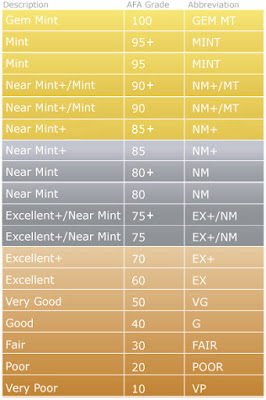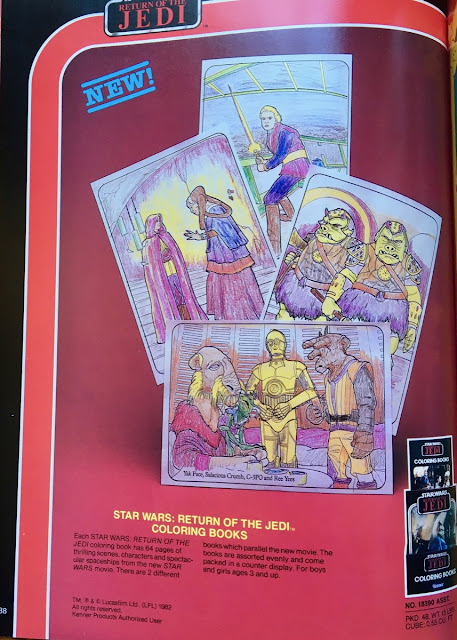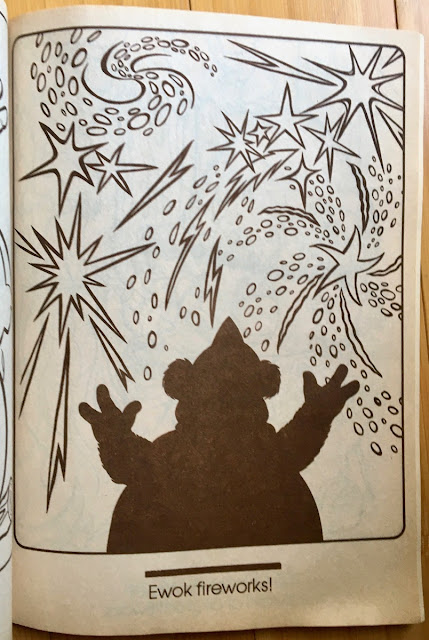Ron writes:
When I was a kid "stay inside the lines" was something you heard regularly -- pretty much every time coloring books became a topic of conversation. Now it's just "stay inside." Both pronouncements imply the threat of social shame, but unless your babysitter was a real as%hole, there was no threat of death attached to coloring.
Anyway, back in the '70s and '80s there were Star Wars coloring books. That was a long time ago, back when you could go stores and visit friends. So while I sit here in my home, alone, feeling a little hazy, and wondering if there's really any point in going back to a the kind of lifestyle in which pants are necessary, I figured I might as well put together a post focused on those papery-smelling relics of days gone by. It's better than thinking about the future.
1978
The first Star Wars coloring books were released in Canada. There were four different books, presumably issued in 1978.
Oh, I guess I should mention here that I'm only going to be reviewing coloring books released by Kenner in Canada and the United States.
This qualification occurs to me now, as I contemplate the above coloring book, because it's clearly a very Kenner sort of thing: The "double racetrack" border, the black-and-silver color scheme, even the lozenge nameplate, indisputably brand this as a Kenner product of the 1970s.
As a toy collector I'm probably biased, but to me that's just what Star Wars looks like.
Whoever at Kenner Canada was responsible for putting together these products must have hated Han Solo, because both the aforementioned book and the one you see directly above feature publicity stills that have been cropped to highlight Chewbacca to the detriment of Han.
You can tell by the expression on Luke's face that he's not convinced of the wisdom of this decision.
This book shows Luke fiddling with C-3PO's arm.
This R2-D2 book rounds out the set of four. It shows R2-D2 after the Tusken Raiders attack him, C-3PO, and Luke. Or at least I think that's the scene. If I'm wrong, please don't write to me with a correction; just keep it to yourself, like your damn germs.
The interiors of the Canadian books featured drawings that can only be called crude.
Okay, they can also be called grossly inaccurate. I believe that's supposed to be a TIE Fighter pilot.
A source of mine claims that Kenner Canada relied on a team of college art students to create these drawings, giving them a mere week to produce content sufficient for four coloring books. The students were supplied with a meager cache of reference material and told to supplement it with whatever they could find on comics, trading cards, and advertising material.
That's probably why this particular image looks copied from issue number four of Marvel's comic series.
Also, as I
pointed out way back in the '90s, several images in the Canadian books were based on prototypes of Kenner toys. This Death Star Droid is a good example: it's obviously based on the
concept model for that figure, a photo of which appeared in some
promotional materials.
I wouldn't be surprised to learn that Kenner Canada provided the aforementioned art students with a similar photo to use as reference.
This is one of the few (perhaps the only?) representations of Blue Snaggletooth to turn up in association with a non-action figure product. And, no, I'm not counting the one seen on Bespin on some
random notepad. That's just a Snaggletooth wearing blue and not
Blue Snaggletooth. Gimme a break with that nonsense.
Blue Snaggletooth has boots. If you don't see a boot, your point is moot.
Canada
being a weird country with two official languages in addition to about a million Tim Hortons, the books feature
English on their front covers and French on their back covers. The above photo shows the backs of all four books.
1980
1980 Saw the release of
The Empire Strikes Back and a large assortment of related merchandise.
Weirdly, despite the example set by Kenner Canada, the U.S. division of the company neglected coloring books until the early 1980s.
As far as I know, though Kenner had marketed plenty of paint sets and produced some three-dimensional coloring items, they'd never done coloring
books. Perhaps their inexperience in that arena explains the delay.
However, by the time 1980 rolled around Kenner's catalog was promoting a range of four coloring books. Based on the photo in the lower right corner, these were the books released in Canada, but rebranded with the
Empire logo.
Why didn't it happen? My guess is that someone at Kenner took a look at the Canadian product and realized it was pretty shoddy. Or perhaps Lucasfilm objected, as they supposedly did in the case of the notorious
utility belts, also released by Kenner Canada. In any event, I think it's reasonable to assume that someone in a position of authority determined that better coloring books were needed.
1981
Sure enough, when Kenner's 1981 catalog rolled off the presses, it showed a higher quality of coloring book.
I think these were released in late 1980, but I'm considering them 1981 products, as that's when they debuted in the catalog. In all likelihood, retailers who ordered coloring books in 1980 received these and not the rebranded Canadian ones featured in the 1980 catalog. Note that the product number of the books from the 1981 catalog is identical to that associated with the books in the 1980 catalog.
Four books were released in this wave. Here's the one showing Leia and Chewbacca on Bespin.
I call this one "we'd be honored if you would join us."
Luke opening a door on Bespin.
Rounding out the set is this book showing R2-D2 escaping from the Rebel base on Hoth.
In Canada, the same four books were issued, though they featured French text on their back covers. If you look closely, you'll also notice an alternate stock number in the upper left corners. Their front covers are identical to those of the U.S. books.
You know this was a class operation because each book features a unique frontispiece trumpeting the names of the folks who created it. It's interesting to note that they were edited and art-directed by Lucasfilm rather than Kenner.
It's also interesting to note that they were all printed in Canada.
Though the art inside these books is a step up from the crude scribblings of the
Star Wars-branded books released in Canada, they contain some pretty weird content.
The above image is a good example. What am I supposed to be looking at?
Is that
Doctor Mindbender? And did he just say something rude to Darth Vader?
I love this Godardian distillation of the Male Gaze.
1982
In 1982, Kenner's line of coloring books did not increase in number (there were still four different books), though two new books were added. That means that two were jettisoned from the line. I don't know which two.
One of the new entries was this Yoda book.
He looks like he just finished seeing a vision of a future filled with COVID-19 and
Baby Yoda memes.
The other new book was this altogether metal-looking example showing Darth Vader and two Stormtroopers.
Is it me, or does this particular book seem almost like something from the '70s? It has the hard-edged "pop" look of Kenner's '70s line.
The interior images of the new books feature blue rather than black lines. This one depicts one of the props used to create the Wampa.
The 1982 books were also released in Canada. This time they featured French text on the front
and back cover, though the French-language
ESB logo appeared on the back only.
1983
In 1983, a year that saw the release of
Return of the Jedi, Kenner shrank their line of coloring books from four to two books.
One book features an iconic shot of Luke aboard the Sail Barge.
The other shows Max Rebo.
Naturally, these books were entirely new and devoted to imagery drawn from
Jedi. Like the 1981 books they feature a frontispiece naming the illustrator: in this case Susan Nelson.
Nelson was pretty talented. Without a doubt,
these are the highest quality coloring books released by Kenner in
association with the Star Wars license.
I particularly love the above two-page spread, with its tapestry-like density of detail.
By the way, from an iconographic standpoint, are the Rebel Commandos the most gay-adjacent characters in the Star Wars universe?
This guy in particular seems to be on loan from the Village People or the portfolio of
Tom of Finland.
The Rebel Commandos:
they commando hard, and they play hard.
The ink used in these was again somewhat bluish in color.
Both of these books were issued in Canada. The Canadian versions exhibit French text and logos on their back covers.
Before we move on to 1984 I'd like to point out an interesting detail that was mentioned to me by Todd Chamberlain. Both the 1983 and 1984 Kenner Repro Art Books (Kenner-issued repositories of black-and-white imagery intended to be used in print advertising) show a coloring book featuring on its cover Princess Leia, C-3PO, and Chewbacca; the setting is Endor.
It seems that, at one point prior to production, this Endor book was nixed in favor of the one featuring Luke. Possibly someone came to his or her senses and determined that Luke brandishing a lightsaber was more exciting than Leia touching C-3PO's face. Whatever happened, Kenner didn't bother to change its clip art. Above you see the coloring books as they appear in the 1984 Repro Art Book.
1984
That Repro Art provides a bridge to our next topic: the coloring books released by Kenner in 1984.
As you will learn by reading the text of the above page from Kenner's catalog of that year, 1984 saw the line expand to three books, the two previously discussed and a new one featuring a shot of Lando Calrissian
There he is atop of one of Jabba's skiffs, showing an alien who's
boss the administrator of Cloud City.
This 1984 book does not feature a frontispiece and seems to have been created by an artist who was not Susan Nelson. The art is a little less sophisticated than that featured in the earlier
ROTJ books, though it's still pretty nice.
This majestic Lando is particularly worthy of admiration.
As far as I know, this book was not issued in Canada.
Also issued in 1984 (or late 1983) were two coloring books focused on Kenner's then new
Wicket the Ewok brand, a line aimed at younger children and featuring cartoon styling.
As the catalogs note, both these and the
ROTJ books shipped in a display that allowed retailers to quickly and easily merchandise them (more on that later).
Each of the Wicket books features unique branding. This one focuses on Wicket and highlights the key branding image of the
Wicket the Ewok line: Wicket swinging on a vine and looking irritatingly happy.
The other book features a pretty nice painting that covers the entire front and back covers.
Both
Wicket the Ewok books were issued in Canada in bilingual editions.
You can get a sense of the look of the art contained in these books by examining this image of Logray tripping balls.
As might be able to to tell, this art features brown rather than blue or black lines. I guess brown is more Ewokesque?
1985
By 1985 Star Wars was about done. That year,
Return of the Jedi was re-released to theaters, and
Ewoks: The Battle for Endor aired on television; but those blips aside, the
Droids and
Ewoks animated series were basically carrying the torch for Star Wars.
Which brings me to this coloring book, released in conjunction with
Ewoks, a show that only the hardest of hardcore Star Wars fans pretends to tolerate.
I think it's the rarest of the set; certainly, it's the one I struggled to find. So if you see one, nab it!
Like the Wicket books from the previous year, the interior images
feature brownish lines. But now they're focused on characters familiar
from the animated series.
My favorite image is the one featured above, in which Latara and Kneesaa are shown very calmly -- almost beatifically -- using bugs to torture their neighbors the Duloks.
I mean, I know the Ewoks are savages who sometimes eat people, but that is some downright barbaric sh%t.
Store Displays
I teased store displays earlier in this (already too lengthy) piece, so I guess I better get those out of the way before you try to gnaw your own leg off to get away from this article.
Who am I kidding? You are shut in your house and probably drunk. You should be grateful that I'm going out of my way to bore you like this.
The
Return of the Jedi books of 1983 and 1984 shipped in this rudimentary counter display -- a nice bonus for retailers who ordered the line. The assortment contained 48 books.
A very similar display shipped with the
Wicket the Ewok books. This item is pretty rare, and the blue-red color scheme really makes it stand out. Thanks to Jarrod Clark for providing the photo.
At least two other displays were issued in association with Kenner's coloring books. Both were "prepack" displays. In other words, they were part of a Kenner program to market to retailers a large quantity of product in an easy-to-assemble display.
This
ESB-era prepack display combined Star Wars with Strawberry Shortcake; thus it appealed to boys and girls alike.
Yeah, I'm gender stereotyping. Edgy, right? I'm like Poe Dameron in
The Last Jedi, mansplaning left and right and just not giving AF. Stop me before I make a joke about Rose Tico.
I'm not aware of an extant example of this display. Store photographs of the era reveal that a unit of this type was released to stores, but that it featured a slightly different design.
Here's another prepack display, this one from 1983. It's unknown whether something exactly like this was released to the public.
The
ROTJ prepack display that
is known looks like this. Note the similarity of the red areas on this display and the display in the previous catalog shot. Thanks to Todd Chamberlain for providing the image.
Are you tired of coloring books?
I am.
Other things I'm tired of: Zoom meetings, people saying "the new normal," the sweatpants I've been wearing for the last week, and that bitch Carole Baskin.
Tired or not tired, if you decide you actually want to collect these things, you can use the above matrix to aid you in your efforts to complete your set.
Stay home! Wash your hands! Do social distancing! Free Winona! All that stuff!
I'd like to extend a huge thank you to Clint Garniss for his help in assembling images of Canadian coloring books.


































































































